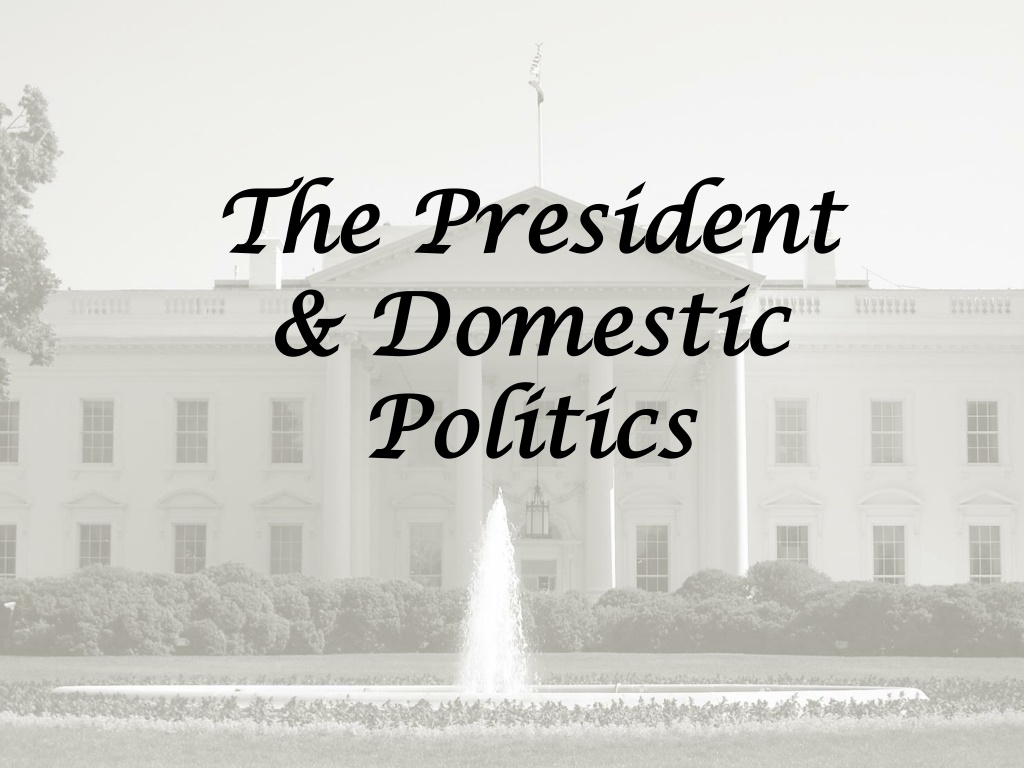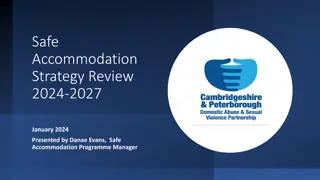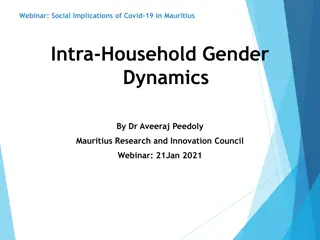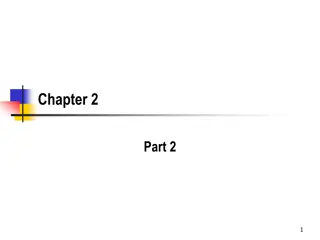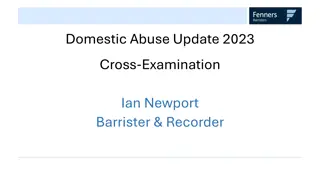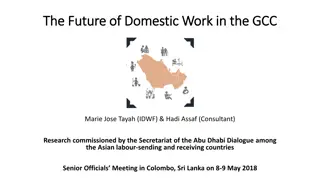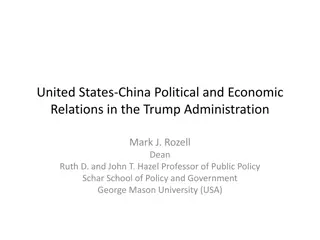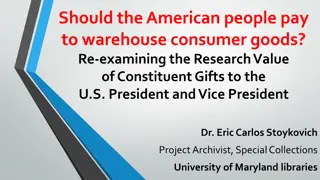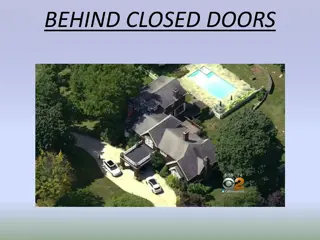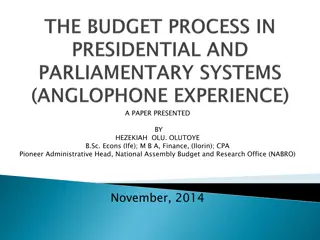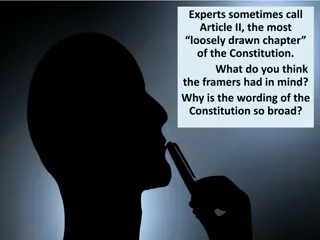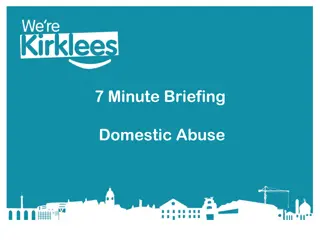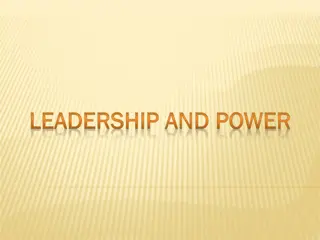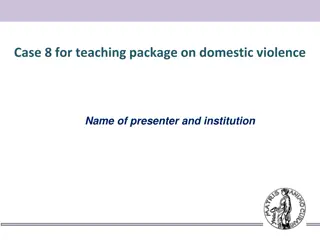Understanding the Evolution of Presidential Power in Domestic Policy
Explores the expansion of the President's role in domestic policy over time, from constitutional powers to modern influences. Topics include legislative interactions, bureaucratic control mechanisms, landmark laws like the Budget and Accounting Act and the Affordable Care Act, and quotes from historical figures. The session also delves into factors affecting the President's ability to shape domestic policy goals effectively.
Download Presentation

Please find below an Image/Link to download the presentation.
The content on the website is provided AS IS for your information and personal use only. It may not be sold, licensed, or shared on other websites without obtaining consent from the author. Download presentation by click this link. If you encounter any issues during the download, it is possible that the publisher has removed the file from their server.
E N D
Presentation Transcript
The President The President & & Domestic Domestic The Presidency & Domestic Policy Politics Politics
Oh, if I only could be President and Congress, too, for just 10 minutes. Theodore Roosevelt
Todays session 1. President s constitutional powers in the domestic policy realm 2. How, and why, the president s domestic policy role has expanded over time 3. Conditions affecting presidents ability to achieve their domestic policy goals
The Presidents constitutional powers in the domestic realm 1.Chief executive power to execute the laws 2. Legislative role e.g., veto, State of the Union
My duty is to execute the laws . . . and not my individual opinions. James Buchanan
Enabling the president to exert more control over the bureaucracy 1.Budget and Accounting Act (1921) Congress give the president through the executive budget greater power over agency budgets 2. Executive Office of President (1939) Congress gives the president the staffing necessary to more fully oversee the activities of the federal agencies.
2010 Affordable Care Act Title I Quality, affordable health care for all Americans Title II The role of public programs Title III Improving the quality and efficiency of health care Title IV Preventing chronic disease and improving public health Title V Health care workforce Title VI Transparency and program integrity Title VII Improving access to innovative medical therapies Title VIII Community living assistance services and supports Title IX Revenue provisions Title X Reauthorization of the Indian Health Care Improvement Act
The essence of decision is choice; and, to choose, it is first necessary to know. Ted Sorenson, presidential assistant
Presidents informal advantages as legislative leader 1. National election because of it, public looks to president for leadership on national issues, more so than individual Senate or House members. (foundation of bully pulpit ) 2. Singular authority unlike Congress, where authority divided executive authority not shared. Constitution vests it entirely in president.
Seven nays and one aye. The ayes have it. Abraham Lincoln
Thats not the way we do things here you draft the bills, and we work them over. House Committee Chairman, comment addressed to President Dwight Eisenhower
Whats most important in presidential policy success? 1. Whether the president has just won election by a wide margin? 2. Whether the president is highly popular with the American public? 3. Whether the president s party has a congressional majority? 4. Whether circumstances dictate policy action?
Each decision is bound to hurt someone . . . [it] will satisfy one group but anger three others. Top Aide to President Gerald Ford
[I had] no choice but to play the hand that history had dealt. Bill Clinton
President Obamas Success Rate in Congress, before & after 2010 election Percentage of bills supported by Obama that were enacted into law Democrats control House & Senate 100 92 90 83 80 Republicans control House 70 57 60 53 50 40 30 20 10 0 2009 2010 2011 2012 Source: Congressional Quarterly Weekly Report, various dates
President Bushs Success Rate in Congress, before & after 2006 election Percentage of bills supported by Bush enacted into law Republicans control House & Senate 90 81 78 80 70 Democrats control House & Senate 60 50 38 40 30 18 20 10 0 2005 2006 2007 2008 Source: Congressional Quarterly Weekly Report, various dates
In the end, the arithmetic is decisive. Arthur Schlesinger, Jr., historian and presidential advisor
Executive orders are issued in context of existing law presidents can direct how the law will be executed, as long as they do not violate any of its provisions.
The people can never understand why the president does not use his supposedly great power to make [Congress] behave. President Harry S. Truman
Case Study: Food Stamp Act The Food Stamp Act of 1964 --part of Lyndon Johnson s War on Poverty But, unlike, many of other initiatives, it did not have strong public support was opposed by business lobbies was opposed by farm lobby (which feared linking food with welfare would weaken support for farm subsidies)
Party Composition of 88th Congress (1963-64) Number of seats 300 258 250 200 177 150 Democrats Republicans 100 67 50 33 0 Senate House
House Vote on Food Stamps Bill If all House members had voted, how many votes needed for passage? 250 226 225 200 175 163 150 Aye Nay 125 100 75 50 26 25 13 0 House Democrats House Republicans
Presidential Success Rate in Congress Percentage of bills supported by president enacted into law Obama 54 GW Bush 66 Clinton 57 GHW Bush 51 Reagan 62 Carter 78 Ford 59 Nixon 69 Johnson 83 Kennedy 82 Eisenhower 71 0 10 20 30 40 50 60 70 80 90 Source: Congressional Quarterly Weekly Report, various dates
Whats the main reason first bill enacted and the second rejected? 1. The urgency of legislative action was greater in the first case, as the economy had only recently entered a severe recession? 2. A change in the party composition of Congress? 3. The second bill called for a much higher level of stimulus spending than the first, and thereby was the larger threat to the budget deficit and national debt?
The 2009 Stimulus Bill (as enacted) $787 billion stimulus package (formally called American Recovery and Reinvestment Act of 2009). Included, e.g., >construction projects >extended unemployment benefits >assistance to state & local governments to enable them to retain their workers
House Vote on the 2009 Stimulus Bill 300 247 250 200 177 Yes No 150 100 50 11 0 0 Democrats Republicans
Senate Vote on the 2009 Stimulus Bill 70 58 60 50 37 40 Yes No 30 20 10 3 0 0 Democrats Republicans
2011 Stimulus Bill (as proposed) $447 billion stimulus package (formally called the American Jobs Act), included Infrastructure projects (e.g., road construction) Extend unemployment benefits Payments to states and localities to retain teachers, police, firefighters
Party Composition of Congress, before and after 2010 election Number of Members 300 250 200 150 Republican s Democrats 100 50 0 Senate (2009-10) Senate (2011-12) House (2009-10) House (2011-12)
Senate Cloture Vote* on 2011 Stimulus Bill 60 50 50 46 40 Yes No 30 20 10 2 0 0 Democrats Republicans *For cloture (a vote to end a filibuster), 60 votes are needed
Summary 1. Presidents constitutional powers in domestic policy realm 2. Presidents advantages (relative to Congress) in initiating major policy proposals 3. Factors affecting presidents success in getting their proposals through Congress particularly, the party composition of Congress
The plain fact is that the United States does not have presidential system. It has a separated system. Charles Jones, political scientist
